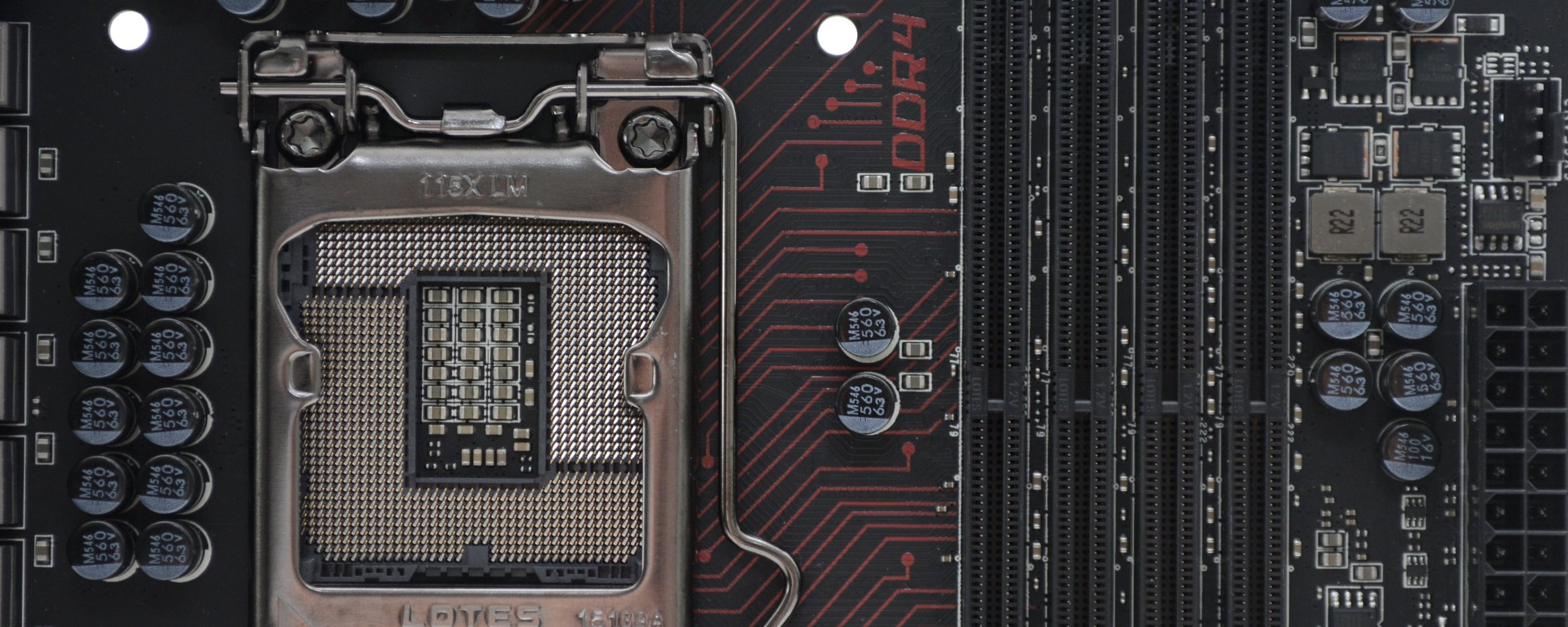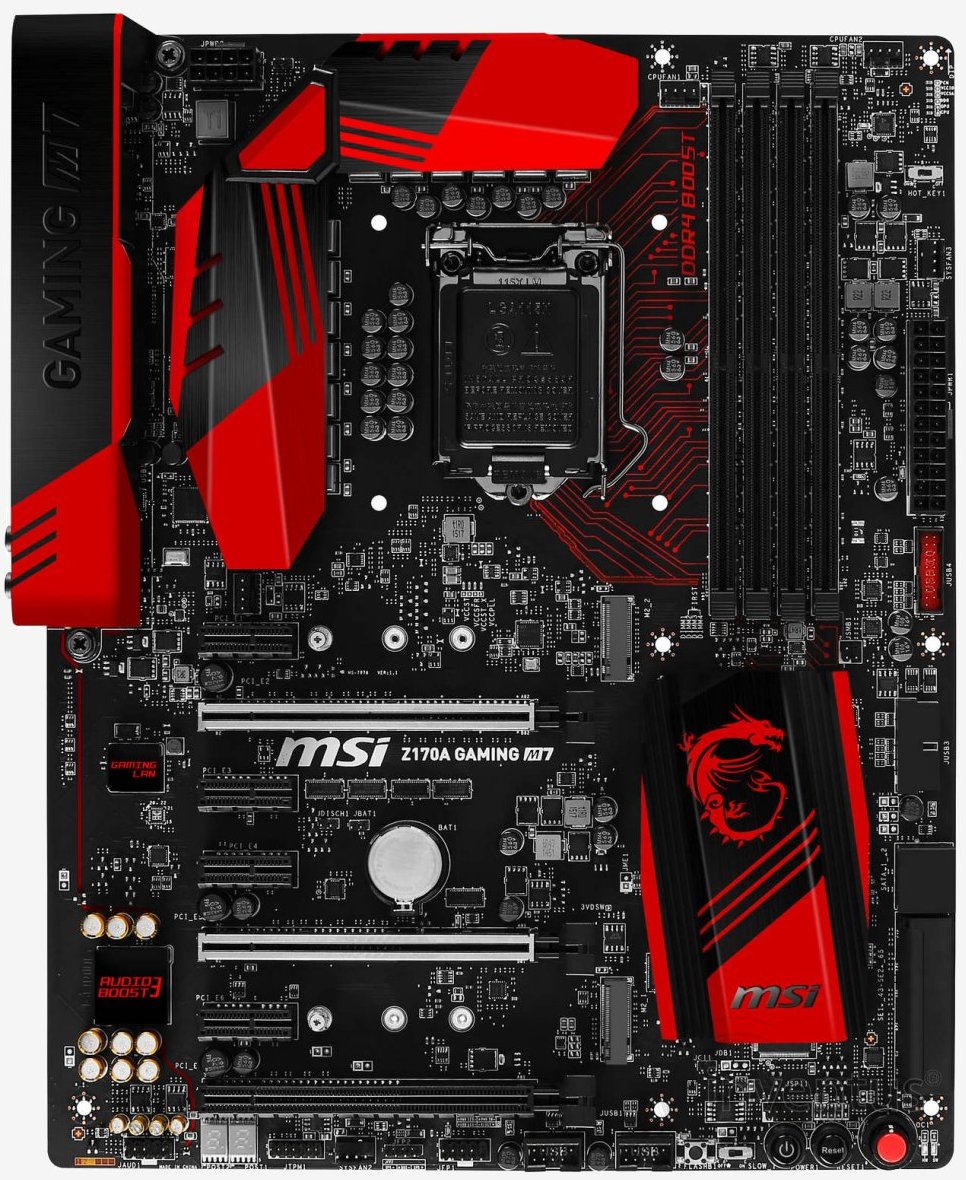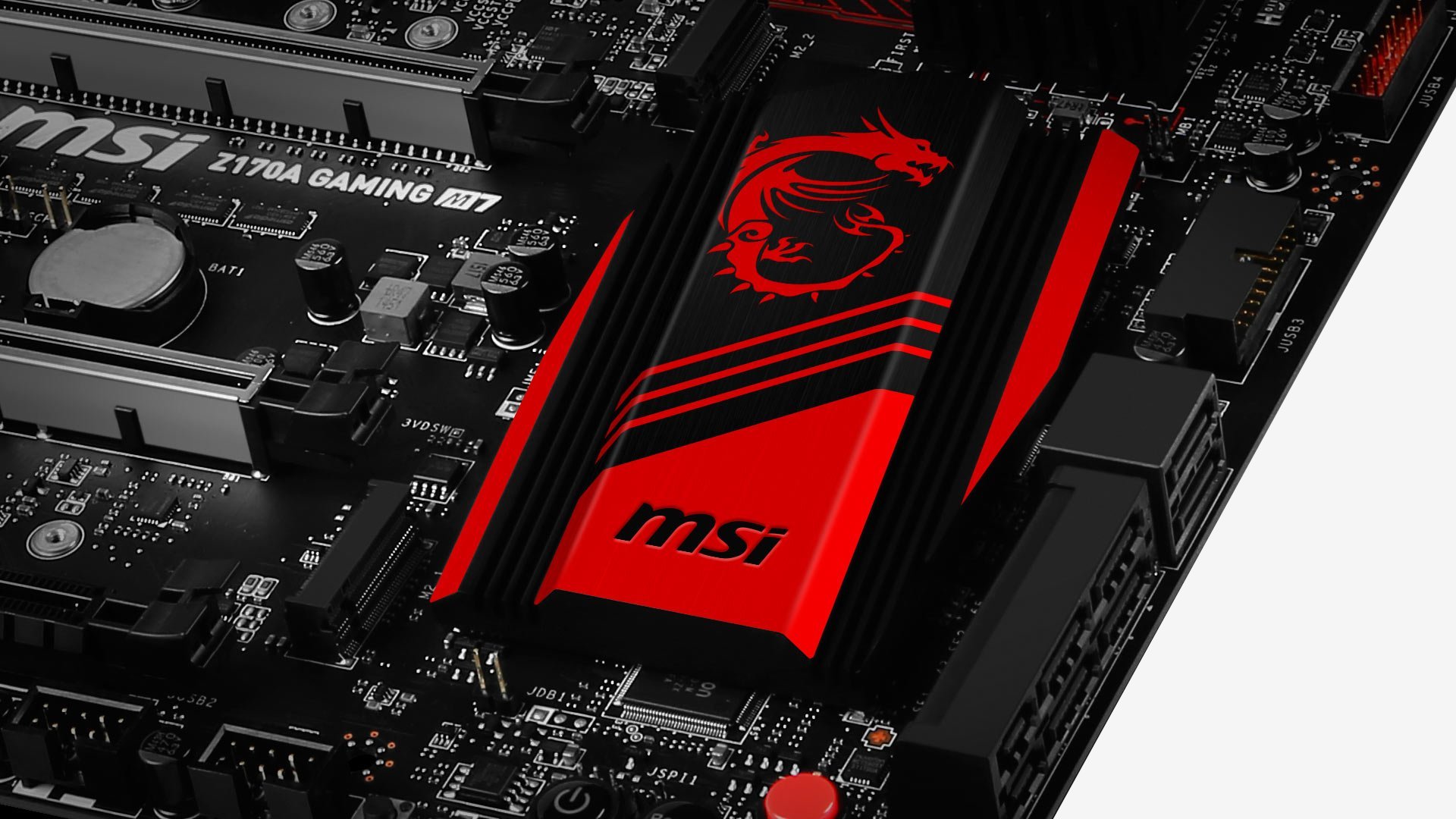MSI Z170A Gaming M7
There was a time not that long ago when just about every MSI motherboard was built on a black PCB and featured a few blue highlights, namely blue PCIe and DIMM slots. Then a few years ago the company jumped on the 'gaming' brand train by releasing its 'Gaming Series' motherboards, the first of which were based on the Intel Z77 and B75 chipsets.
These boards featured elaborate heatsinks with red dragons etched into them and well... they must have sold well because today the formula remains much the same. In fact buying a non-gaming brand MSI motherboard is the new challenge, as they have the Enthusiast Gaming, Performance Gaming and Arsenal Gaming series. For those not all geared up for gaming there is the Pro series, but that sounds pretty boring.
At the top of MSI's Z170 range is the Z170A XPower Gaming Titanium Edition – quite the mouthful. The board looks like the result of a printing error. Someone obviously hit invert color by mistake.
If you can't afford the $300 asking price for the Titanium Edition board then perhaps the $210 Z170A Gaming M7 is a more practical choice.
The Z170A Gaming M7 has been given the standard gaming red/black color scheme and it has to be said the board looks impressive. The massive power phase cooling and those red traces from the CPU to the DIMM slots make this a rather striking motherboard.
The Z170A Gaming M7 is much more than a dazzling design. It's surprisingly well equipped though keep in mind that it costs much less than Asrock Z170 Extreme7+ and Asus ROG Maximus VIII Hero, so we aren't expecting the same level of features.
On-board we find three PCI Express x16 slots which allow for x8/x8 dual graphics card configurations or x8/x8/x4 triple cards.
MSI has helped save costs by not implementing a 3rd party SATA controller and instead leaving the Z170A Gaming M7 with the standard 6 SATA ports from the Z170 chipset. They have however made sure that there are two M.2 slots and two SATA Express ports.
This means that there are 10 storage interfaces available, though a maximum of seven can be used simultaneously. For example one M.2 slot can be used along with all six SATA ports, while using both M.2 slots will reduce the available SATA ports to just four.
Moving away from storage to audio we find that like Asrock MSI has gone with the Realtek ALC1150 codec and like Asrock they have paired it with some extras to create what their marketing department named Audio Boost 3.
The Audio Boost 3 is similar to Purity Sound 3, though MSI's implementation might be even better. The solution consists of two separate DACs an ESS Sabre 124 dBA SNR chip handles the front-out and headphones out channels, while a Realtek ALC1150 (115 dBA SNR) handles other analog channels in a 7.1-channel setup.
MSI has wired the ALC1150 to the HDA channel of the PCH and select channel D/A conversion is offloaded to the Sabre chip. Also included is a 600Ω headphones amplifier chip from TI and this is the same solution used by Asrock. Again we find that Nichicon capacitors have been used to prevent signal loss and the entire audio circuitry has been placed on an isolated section of the PCB, while the codec and DAC are capped by an inner EMI shield.
Also included in the audio package is Nahimic Sound Technology which offers virtual 7.1 sound in high definition using custom designed software.
Unfortunately the Z170A Gaming M7 does include a Killer network controller, the E2400 to be precise. Personally I would have much preferred an Intel controller, but board makers seem to think their "gaming" motherboards need a controller that falsely advertises the ability to "experience gaming without lag" among other things that are untrue.
Like the SATA 6Gb/s support, the Z170A Gaming M7's USB 3.0 support is also limited to what the Z170 chipset offers – six USB 3.0 ports in total – though MSI advertises them as USB 3.1 Gen1 ports, which is a little confusing.
Anyway there are just two USB 3.0 ports on the I/O panel, while an additional four can be accessed using a pair of onboard headers. Out of the box there is no way to use them though your computer case should be able to use one of the headers. Given how sparse the Z170A Gaming M7's I/O panel is we are surprised MSI didn't make more effort to include at least four USB 3.0 ports here.
Thankfully there is a pair of true USB 3.1 ports on the I/O panel, a Type-A port along with a smaller Type-C port which are provided by the ASMedia ASM1142 chipset. These are the only available USB 3.1 ports so the Z170A Gaming M7 is limited to just two then.
Along with the two USB 3.0 ports and two USB 3.1 ports we also find three of what can now be considered legacy USB 2.0 ports. Speaking of legacy connectivity there is also a single PS/2 keyboard or mouse connector. We'd like to see more USB 3.0 ports and less connectors no one is going to use.
Interestingly, MSI has included a pair of HDMI outputs along with a DisplayPort which is nice, though users will have to make do with a DVI connector or an adapter can of course be used.
Finally there is a single Gigabit LAN port along with five audio jacks and an optical audio output.
In terms of software the MSI Command Center is a nice utility and we prefer it to Asrock's A-Tuning software. The Command Center offers loads of overclocking options with a huge arrange of voltage and memory options. The real-time on-board temperature sensors control menu is also nifty.
The UEFI BIOS also looks great and is well laid out. Like Asrock, we have found that MSI has been using the same design and layout for quite a few years now, which isn't a bad thing. Those familiar with their boards will hit the ground running.







